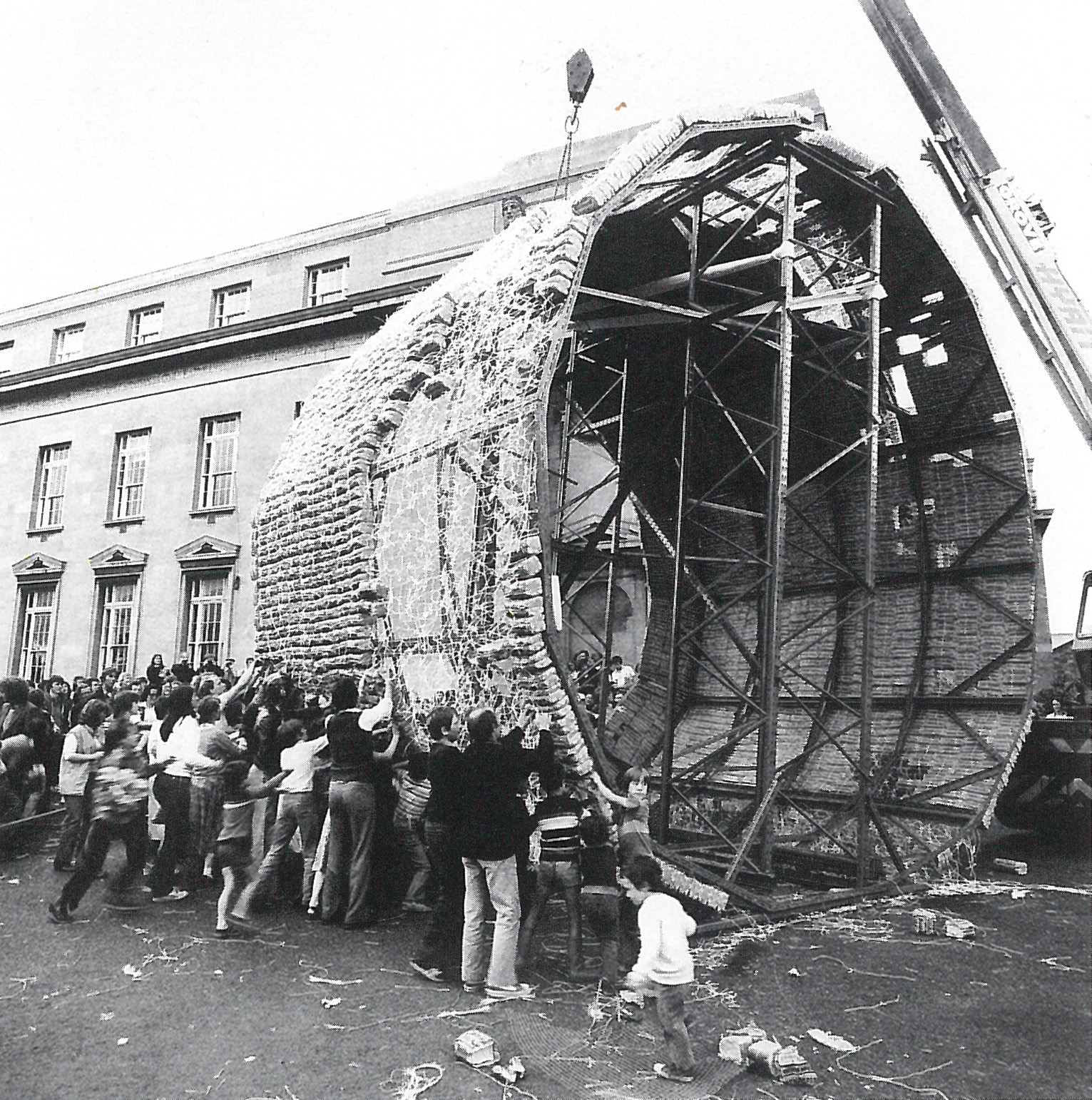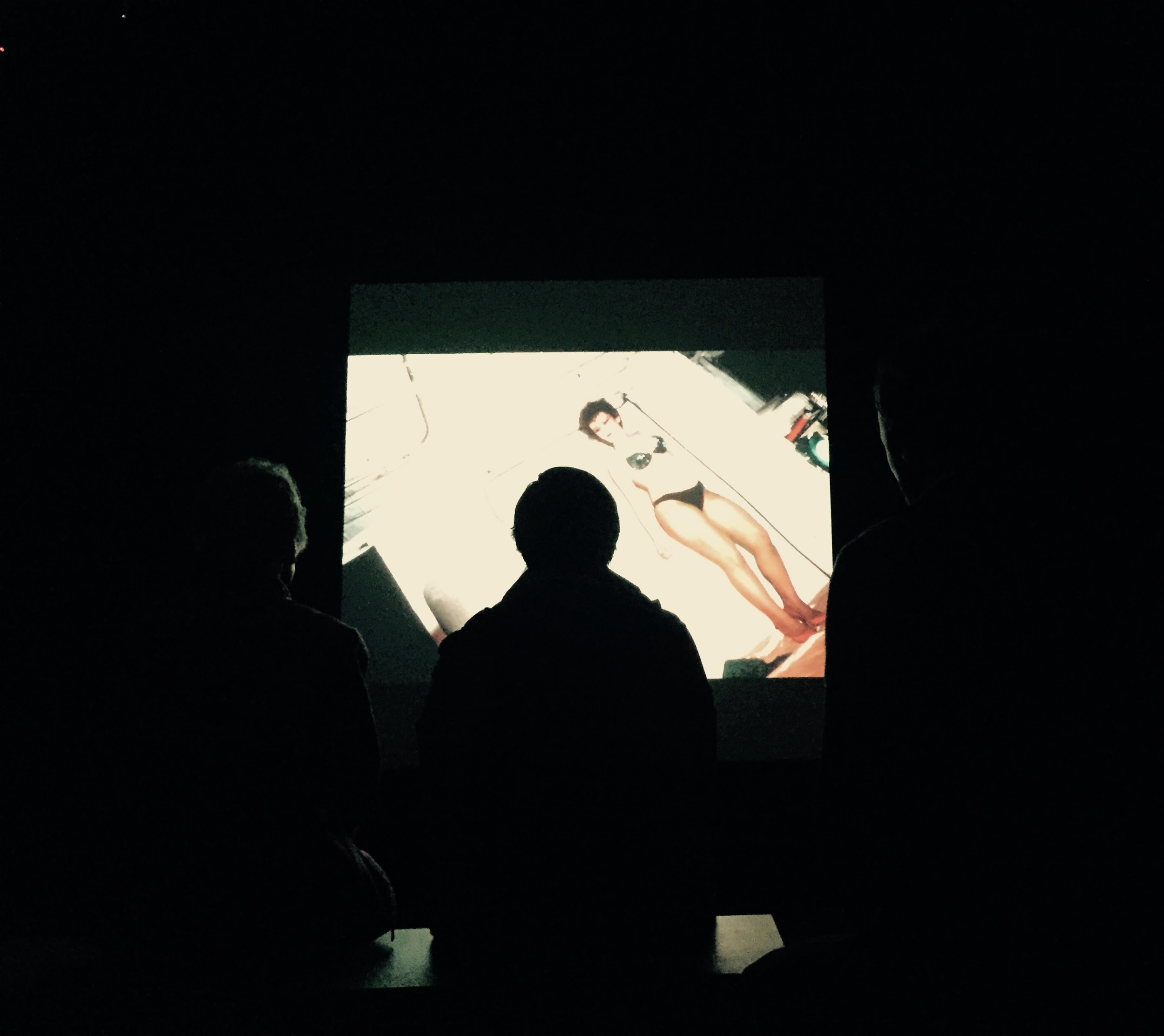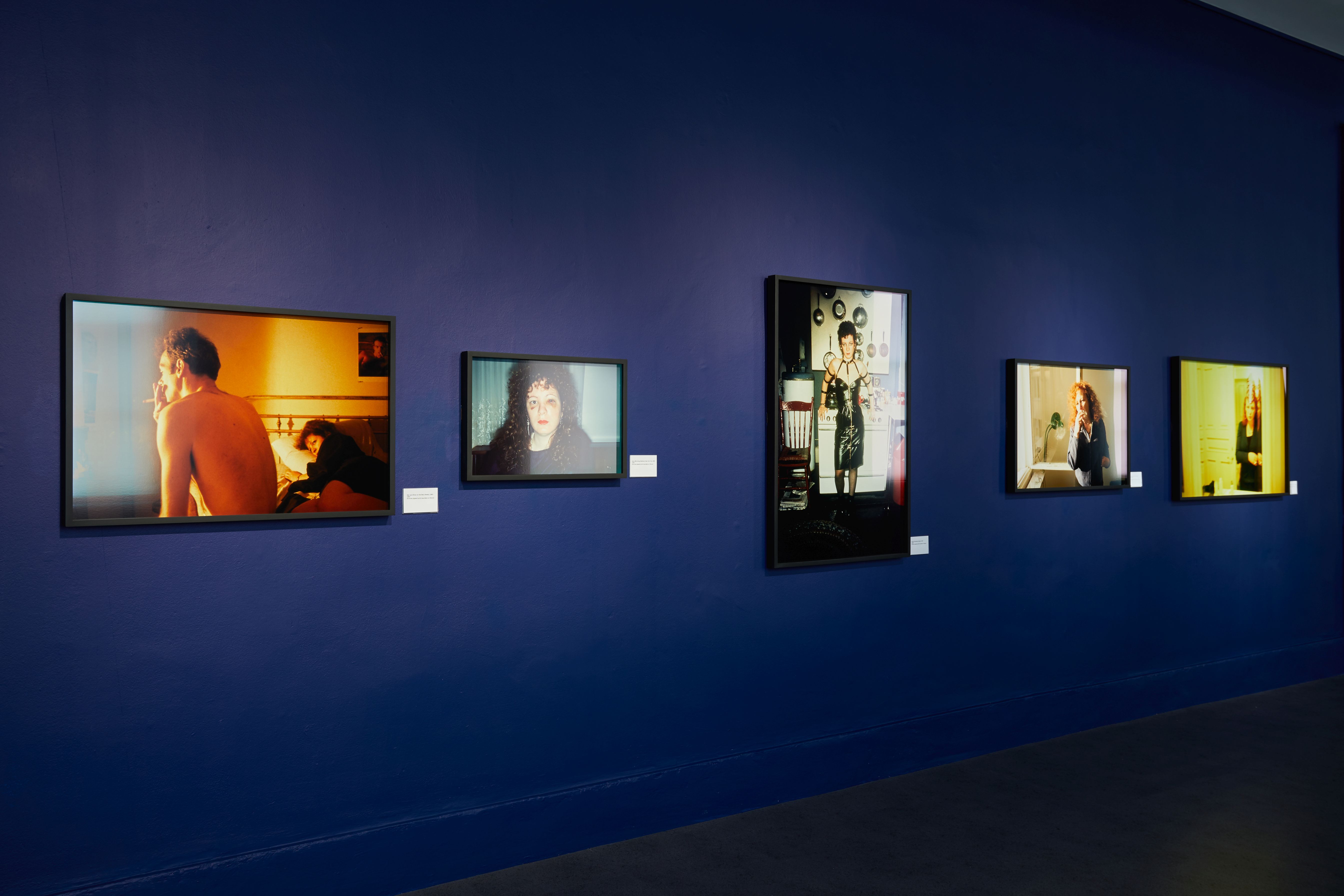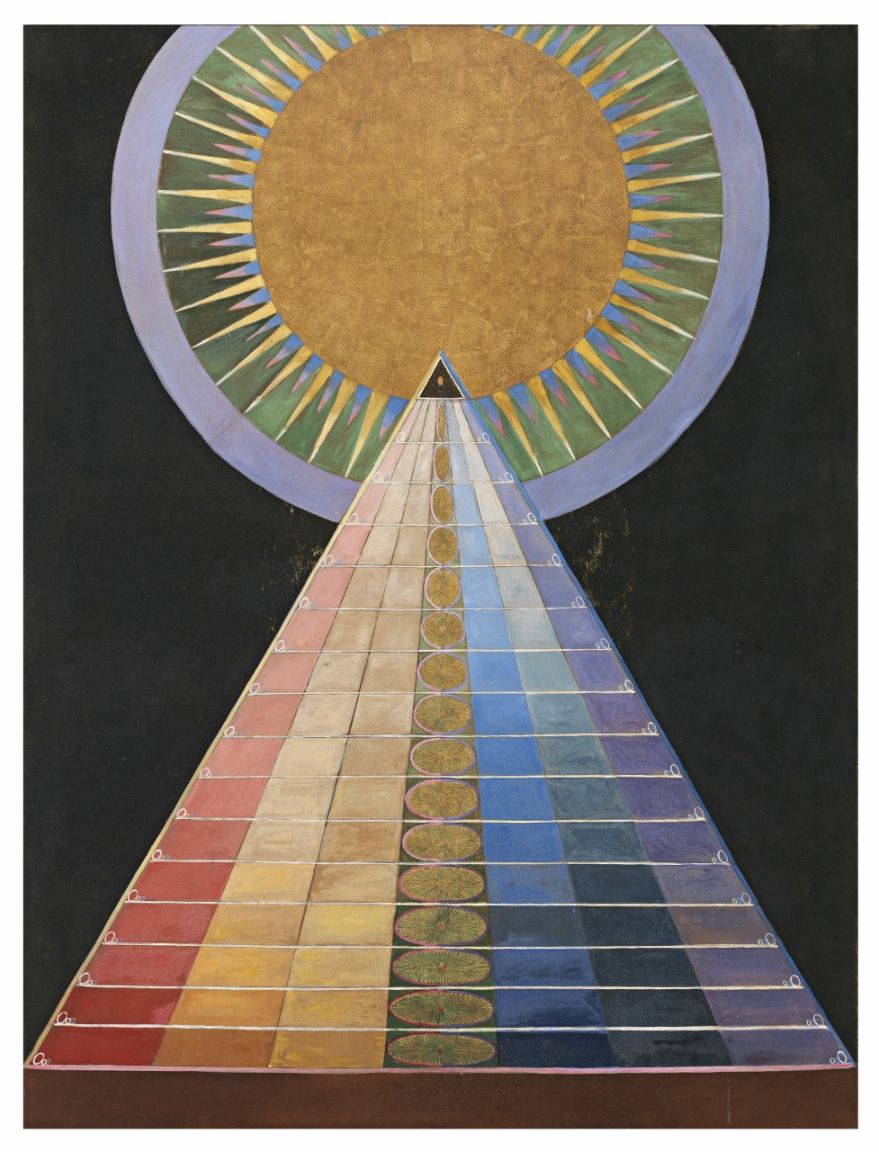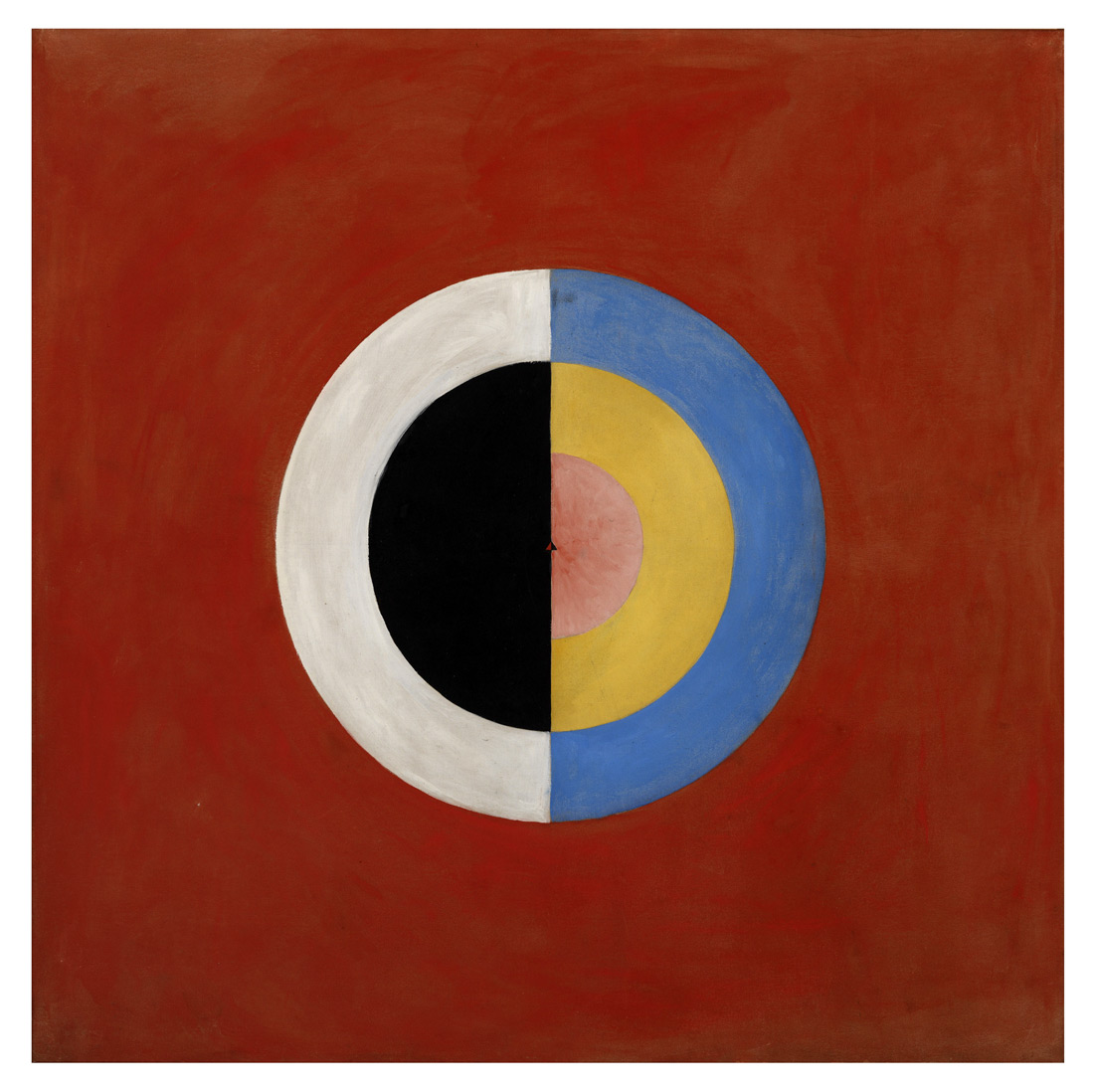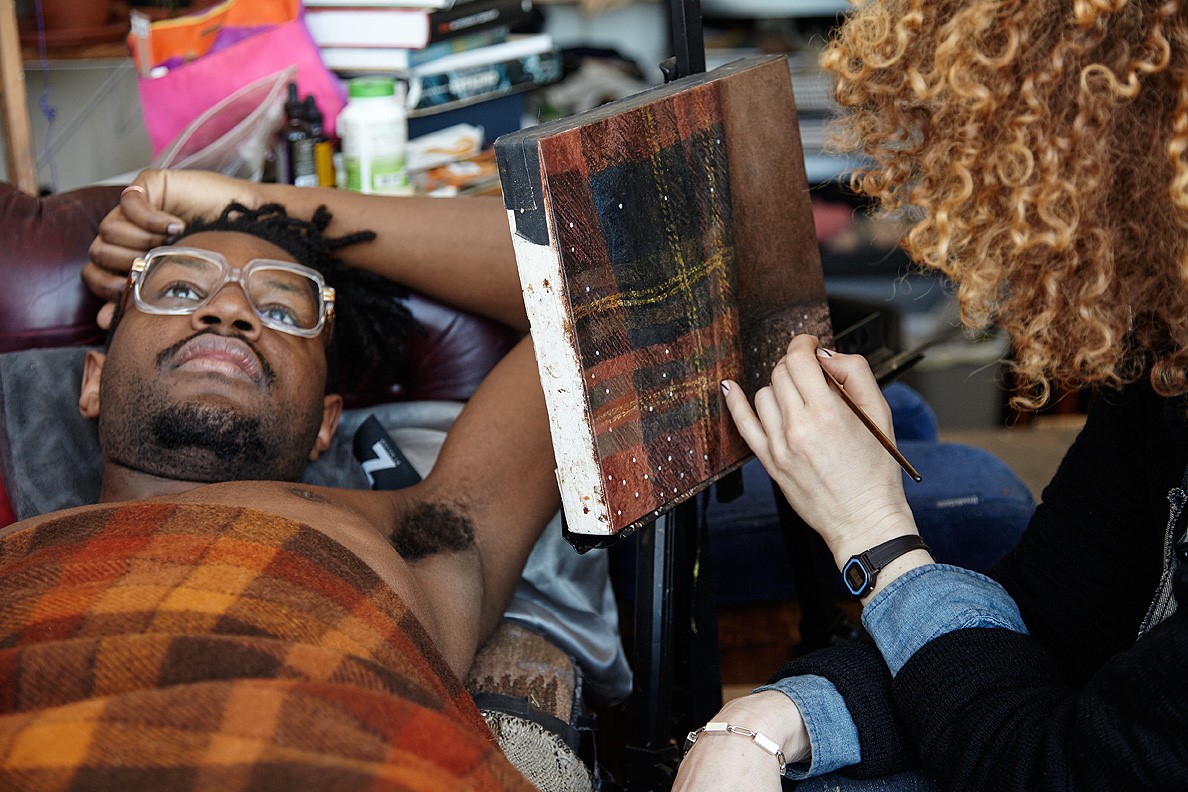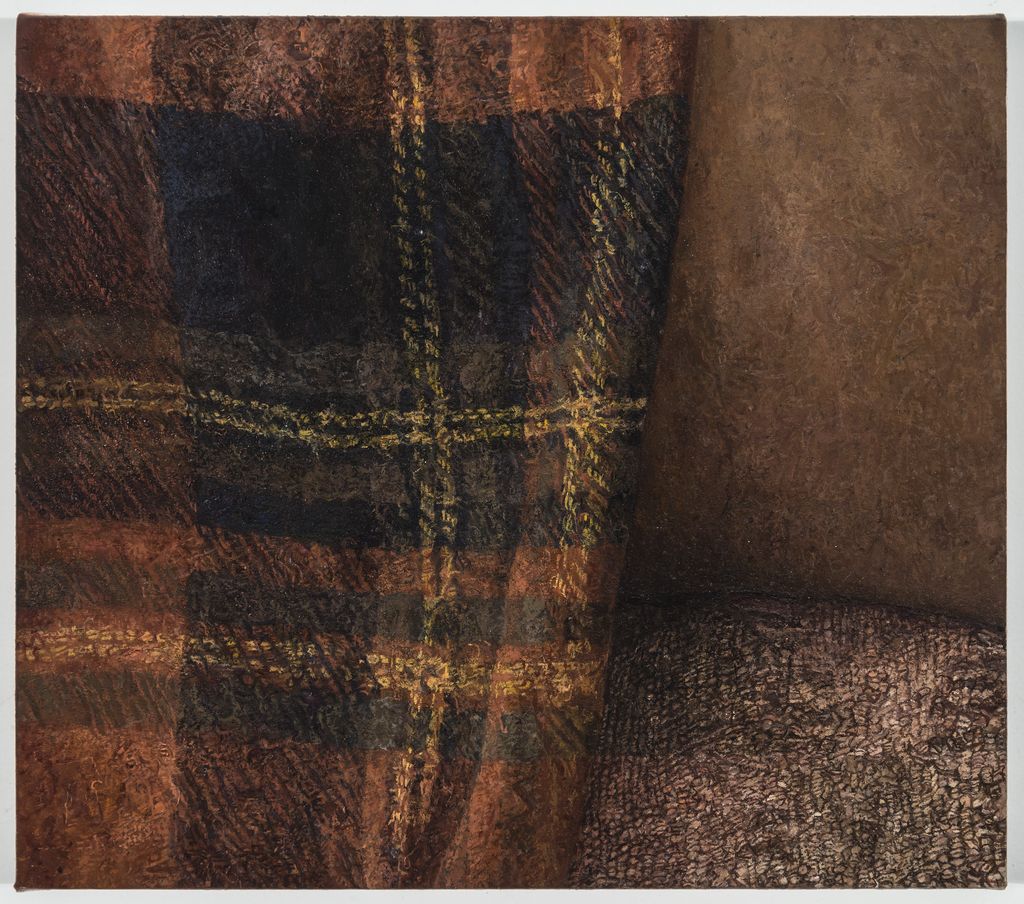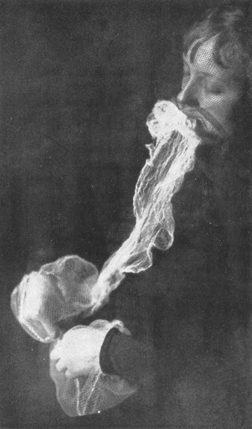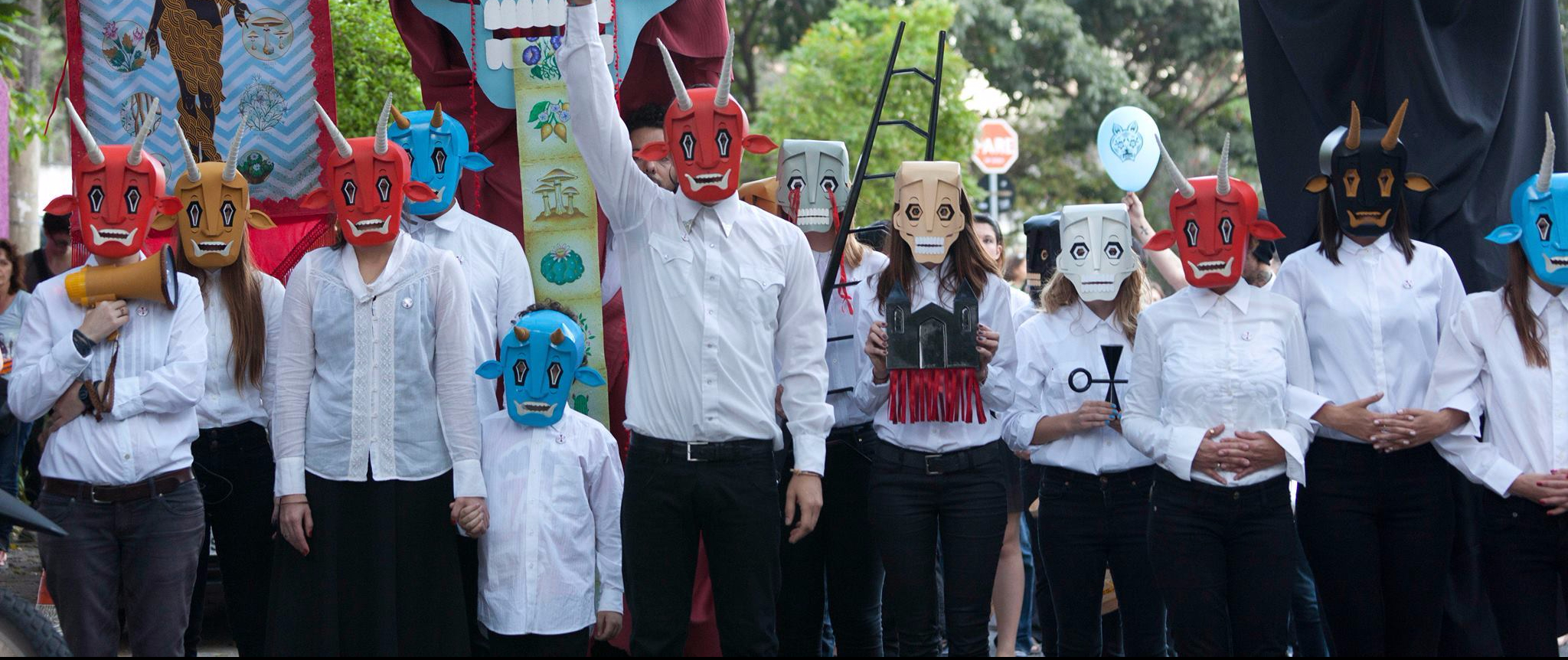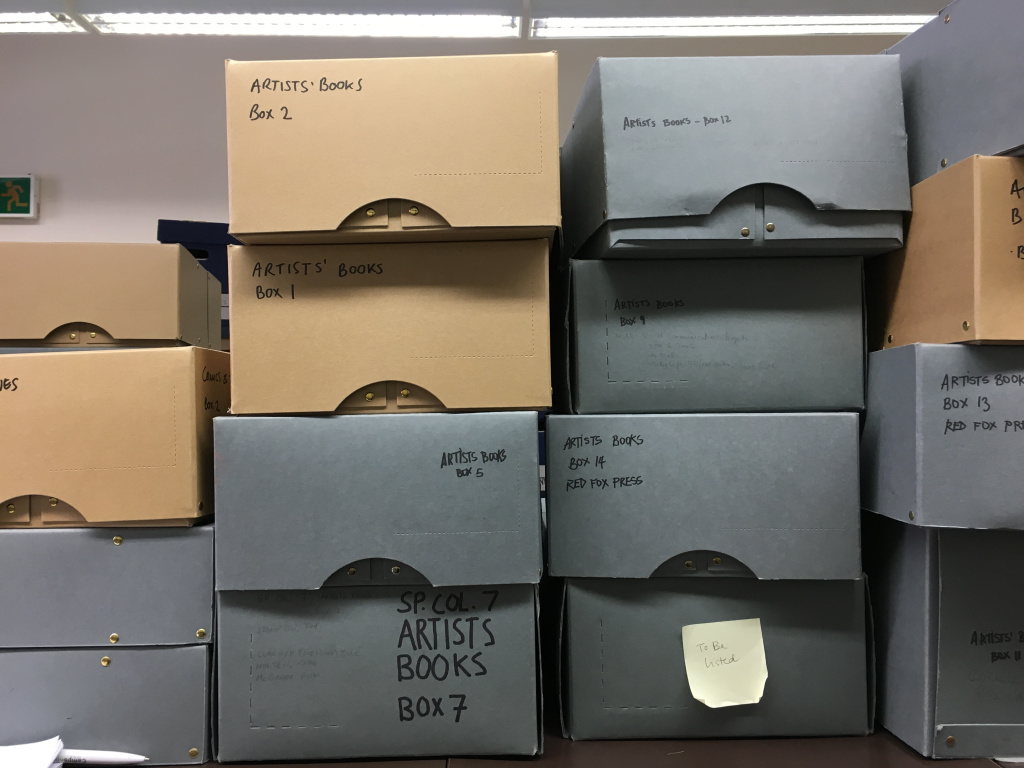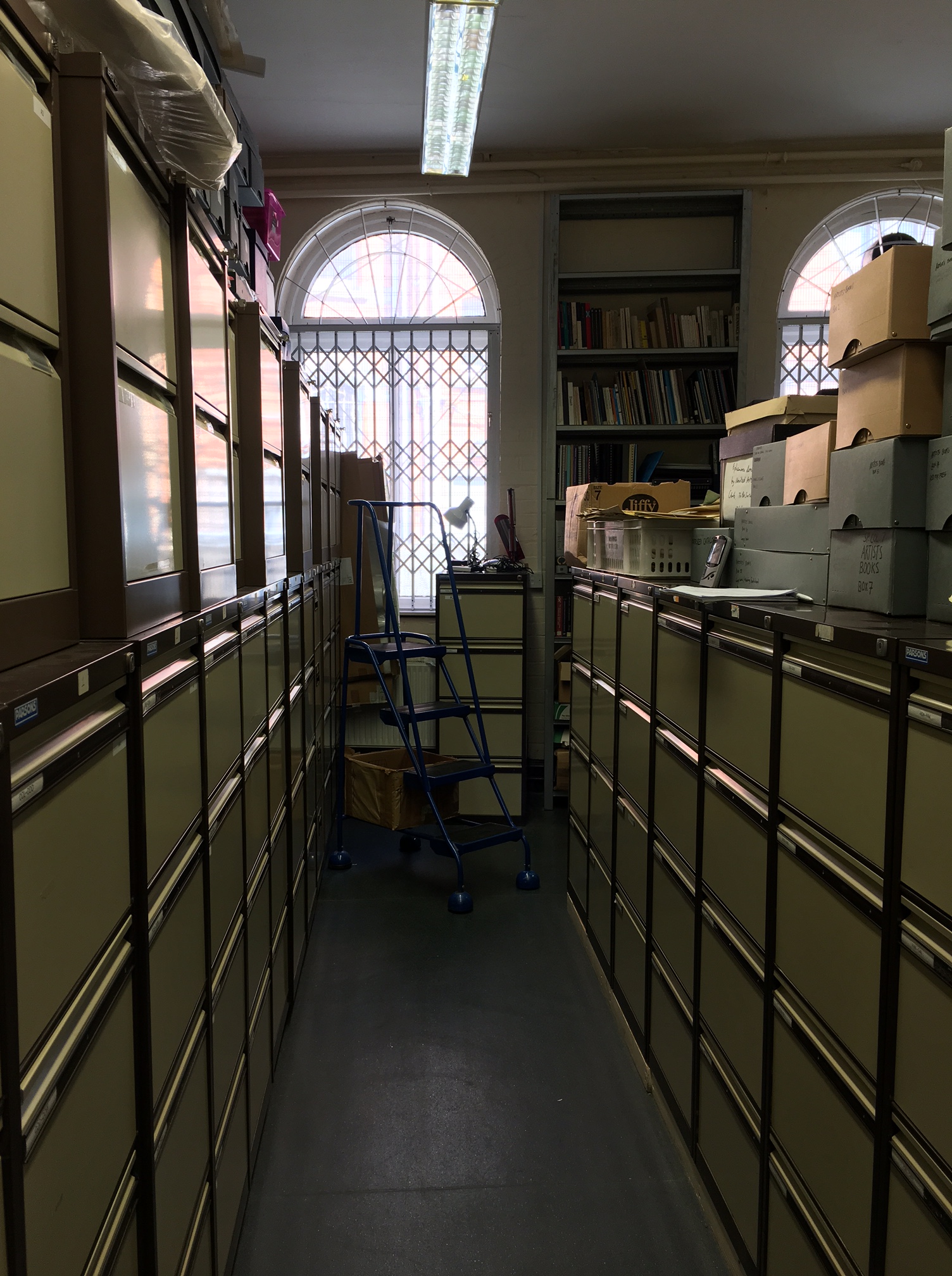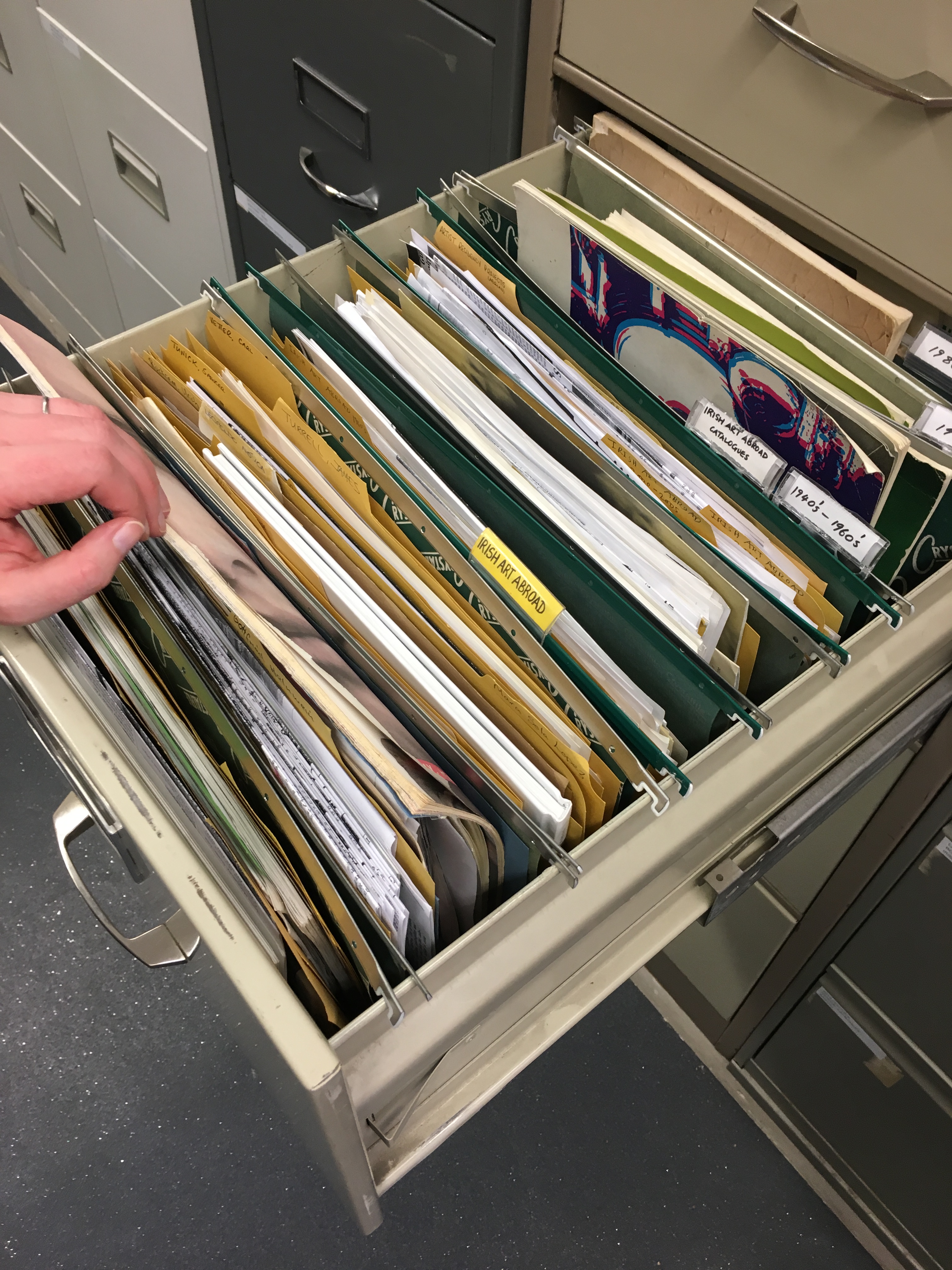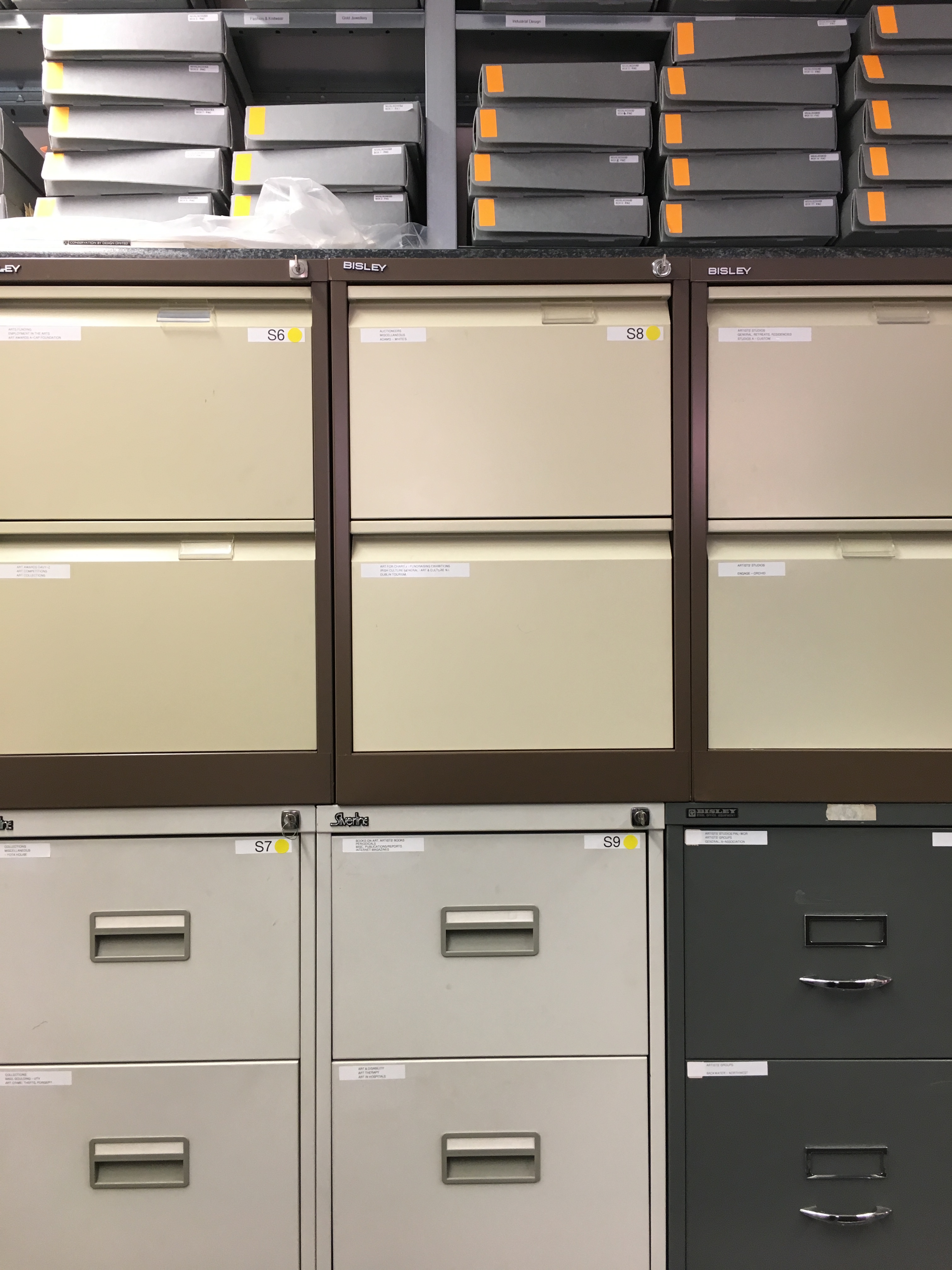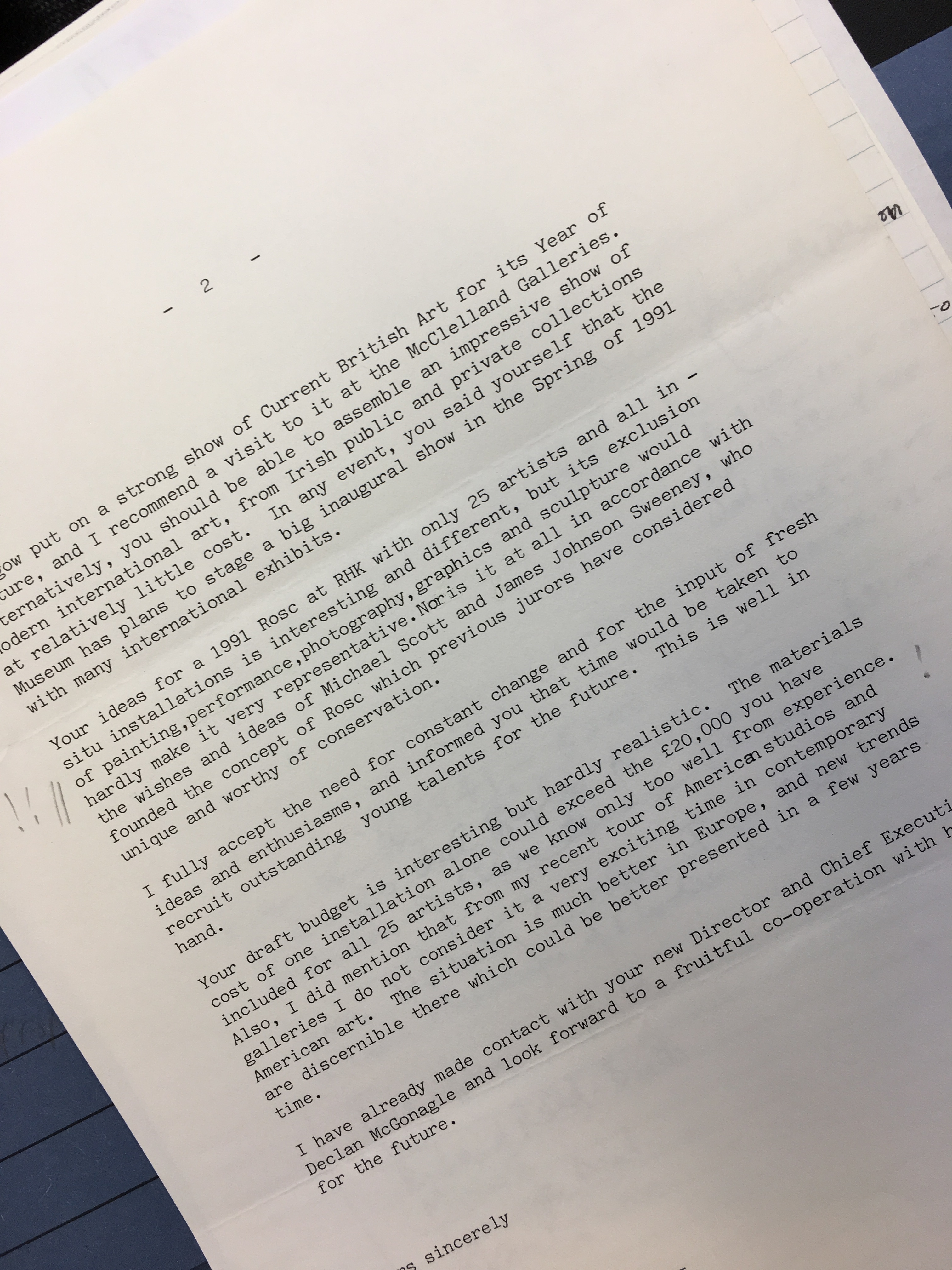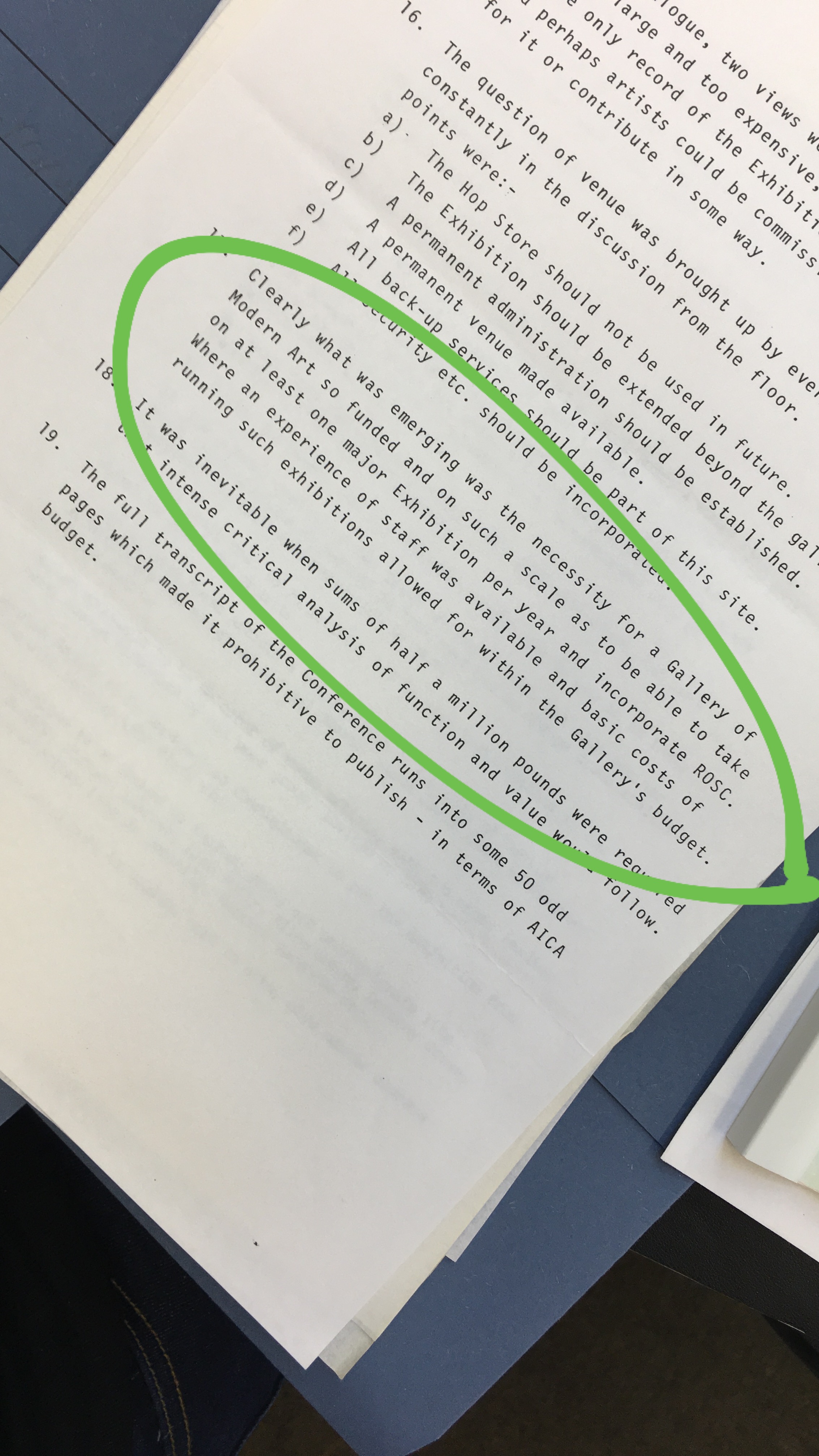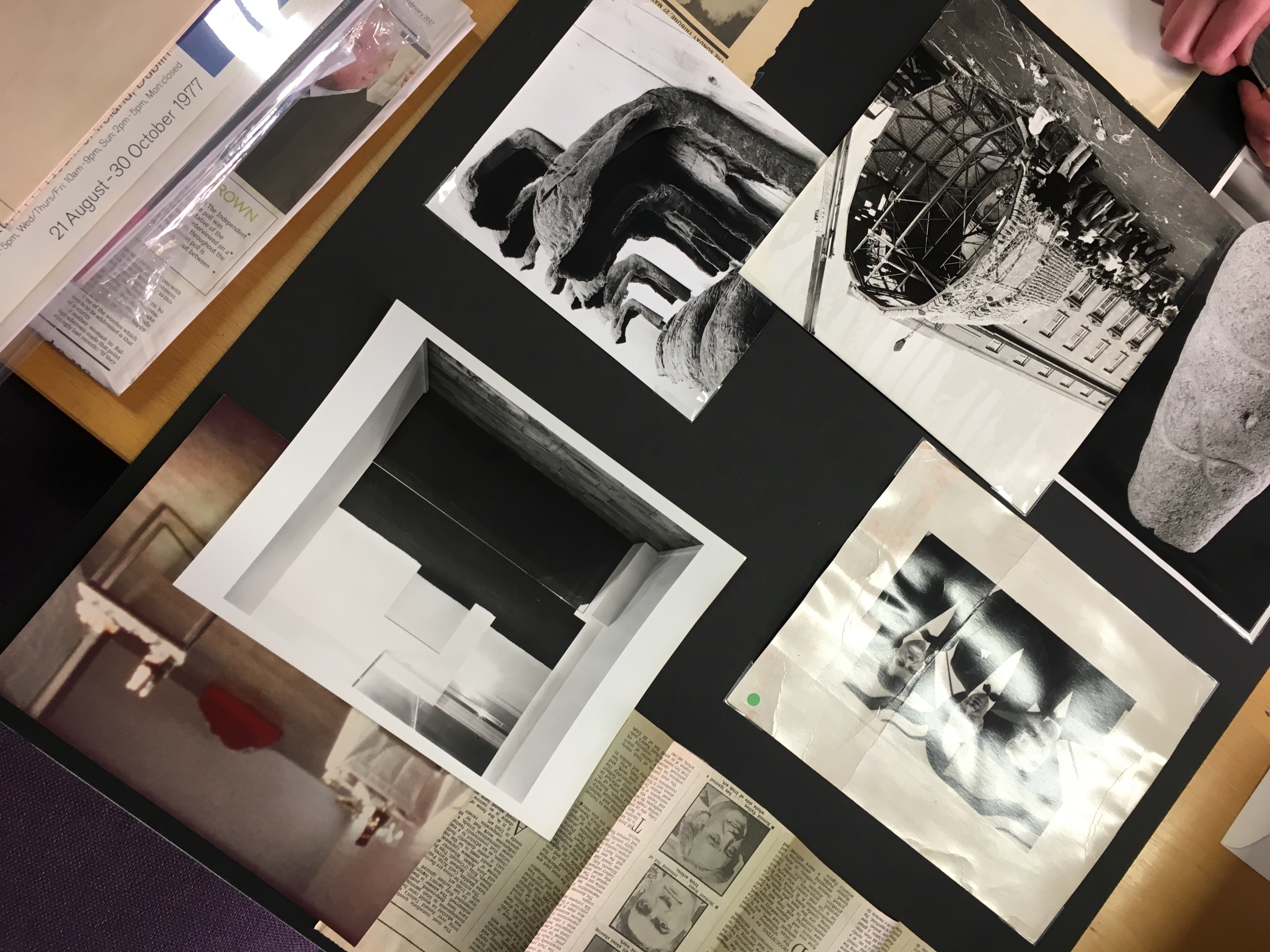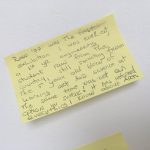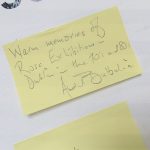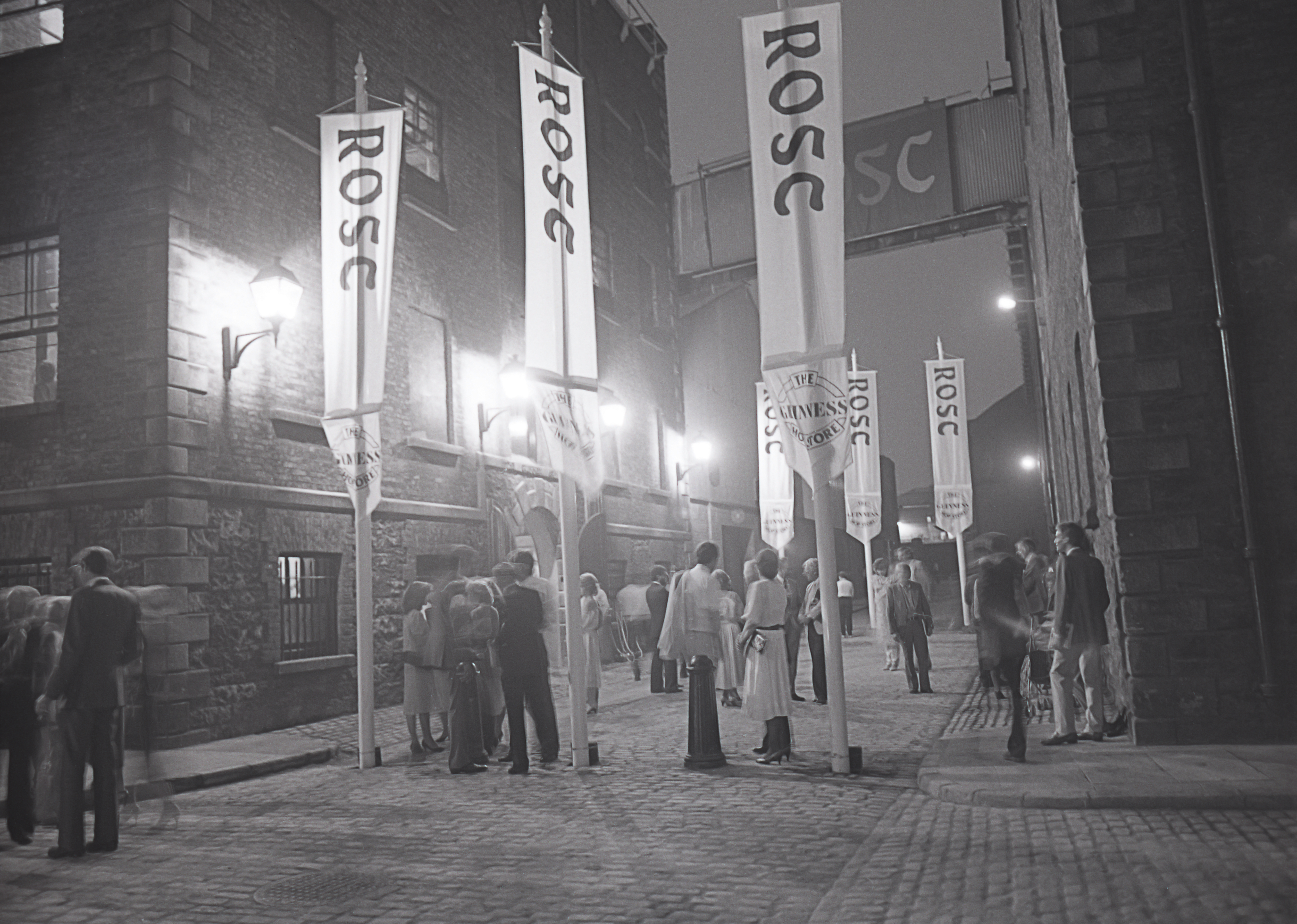
I had a dream the other night about being third up to pitch for a major art commission and the group before us used artists to act out their proposal. My team in contrast consisted of curators and a lighting designer – we looked at each other terrified and wished to pull out immediately. A common curator’s nightmare perhaps, wary one should be of ignoring artists in favour of a curatorial concept. Ignoring artists could never be an accusation aimed at the various ROSC committees. However the same committees could be accused of ignoring the growing trend of thematic exhibitions.

The evidence for this failing can be exposed by contrasting some of the contemporaneous exhibitions spanning ROSC’s two decades between 1967 and 1988. In Bruce Altshuler’s book Biennials and Beyond: Exhibitions that made Art History: 1962-2002, ROSC is absent. Two notable international exhibitions that bookend ROSC are listed however, namely “When Attitudes Become Form”, Bern, 1969 and “Magiciens de la Terre”, Paris, 1989. While ROSC ’77 included eleven artists previously shown in documenta 5 (which took place in 1972 and is also listed as an exhibition that made art history) there was no overarching theme or concept introduced by ROSC other than the notion that these artists were of interest and a la mode. Biennials and Beyond highlights the trend of the thematic exhibition during the lifetime of ROSC,
“The most important curatorial development of the post-war period was the thematic exhibition, and documenta 5 established that paradigm. In response to a contemporary art explosion of perplexing form and variety, exhibition- makers sought not only to introduce the new but to provide interpretive concepts for its understanding.”
– Bruce Altshuler, Biennials and Beyond-Exhibitions that made Art History 1962-2002 (London: Phaidon, 2013) p. 157.
While Rosc’s disconnect with current trends is alluded to in a review by Bernard Denvir for Art International,
“The cultural neophyte who visits Rosc is not likely to come away with a realisation that participation rather than observation, processes rather than products, concepts rather than conclusions are the preferential concerns of a good deal of modern art.”
– Bernard Denvir, Art International, 1972 which was displayed on the IMMA ROSC timeline.
Denvir is making an obvious comparison between ROSC and the two Harold Szeemann seminal exhibitions “When Attitudes Become Form” and documenta 5.
Fetishising of Seminal Exhibitions
The fetishizing of seminal exhibitions (of which IMMA’s ROSC 50 is guilty to a degree) is best exemplified by several diverse attempts to restage Szeemann’s “Live in your head. When Attitudes Become Form: Works-Concepts- Processes-Situations-Information” originally conceived for the Kunsthalle Bern. This fetishisation reached its peak in 2013 when the Prada Foundation in Venice restaged the exhibition down to the pattern of the floor to the placement of the radiators. Where possible, all the original works displayed in 1969 were gathered and hung in the exact spatial configuration as before. If a work was unavailable their absence was represented by displaying silhouettes on the walls and floors alongside a photograph of the correspondent works. The restaging was curated by Germano Celant (incidentally one of the international advisors of ROSC ‘80) in dialogue with artist Thomas Demand and architect Rem Koolhaas. A star-packed line up for the most referenced exhibition in contemporary art discourse.
Another star curator Jens Hoffman had previously attempted his own restaging of the same exhibition but this time he invoked the spirit and ethos of the exhibition concept itself. His exhibition in 2012 for the CCA San Francisco, “When Attitudes Became Form Become Attitudes” (I know somewhat confusing!) is treated like a sequel to the original exhibition. Contemporary artists who would have been of a similar age as the original 1969 artists were invited to exhibit in the spirit of the original show. Hoffmann refers to the enthusiasm young artists still show for the ideals expressed in the original exhibition and nostalgia for a time before the art market was so central, a time to quote Hoffmann,“Where artists were still investigating really radical questions, and the concepts were pushed to their limits and its boundaries.” Daniel Buren had recognized this trend in his 1972 essay “Exhibition of an exhibition” wherein he notes, “More and more, the subject of an exhibition tends not to be the display of artworks, but the exhibition of the exhibition as a work of art”. Little did he know how far that idea would go!
ROSC 2020 Vision
To imagine where ROSC would be today if it had continued you could compare similar periodic exhibitions that have survived from the 70s. Many of these exhibitions are constantly debating their format and frequency. For example, I attended the press launch of Skulptur Projekte Münster (SPM) 2017 held in the Old Theatre Münster. Chaired by the indomitable artistic director Kasper König, this is the fifth edition of this decennial exhibition. Founded in 1977 it has fought off a push to change the frequency of the exhibition to a quinquennial to match nearby documenta. Though there seems some sense in the proposal, as you could poach the art crowd from the more popular documenta, it goes against the very founding ethos of SPM. At the press conference König made several references to the virtues of leaving ten years between exhibitions. He said it takes 5 or 6 years to properly judge a show and he is proud they didn’t become something stupid like the Rocky series.
IMMA’s ROSC 50- 1967-2017 judges ROSC with a distance of 50 years and 29 years in the case of the final ROSC in 1988. With the advantage of time we can appraise the selection of artists according to how their careers developed. Would the visitor to ROSC ‘88 have guessed that a Basquiat painting would become one of the most expensive artworks ever sold or that Anthony Gormley would become so ubiquitous? Here I was about to list the artists whose careers took a nose dive such as Gunter Brus, Luciano Fabro and Gilberto Zorio all from ROSC ’88. However here is a lesson to any would be art historian, Brus and Fabro were included in documenta 5, and Zorio featured in “When Attitudes Become Form” the very exhibitions I am holding up as exemplary and a foil to the more conservative ROSC. But the more significant lesson is to note that the ROSC ‘88 catalogue does not deem it important to list either documenta 5 or “When Attitudes Become Form” as part of the artists selected exhibitions.
It is revealing to recall this very discursive press conference while thinking about ROSC and its legacy. Many of the on-going debates about the structure, frequency, financing, gender balance, local participation, and general raison d’être as well as the precarious nature of the political situation are of course not dissimilar to the debates one can read in the minutes of the ROSC committee meetings and especially at the ROSC Reconsidered symposium held at NCAD in 1984.
Art should never be a settled thing- that is the key and the contradiction for IMMA’s celebration of ROSC. Arguably ROSC should never have imagined an end game that was the setting up of IMMA. To stop in 1988 was to stop just as everything was starting – with the Havana Biennial founded in 1984 and the Istanbul Biennial in 1987 you have the beginning of the biennalisation of the artworld and of course the increase in art fairs.
Adrian Searle commented on the second Frieze Art Fair in 2005;
“Fairs are fashionable events, in much the same way as international biennales appear to be taking over calendars worldwide. This has been termed the “biennalisation” of the art world.”
The Frieze Art Fair continues to be housed in a giant white tent. The background of white cloth reminds us of early ROSCs in the RDS and the clever draping of the walls in white muslin. Richard Wallace writing about the first documenta has a great sense of the impact of the innovative installation of Arnold Bode (who used white plastic curtains to filter the natural light coming into the exhibition space) for the still ruined Fridericianum in 1955.
“This engineering of visual spectatorship certainly contributed to the unique success of the exhibition…spectatorship as a public act of judgement sharing, a public form of consensus via a public display of individual judgement”
– Ian Wallace, The First documenta, 1955 (a lecture presented on the occasion of a symposium on early post-war art titled “The triumph of pessimism,” University of British Columbia, Department of Fine Arts, 1987) in The Book of Books documenta 13, (Germany: Hatje Cantz, 2013) p.68.
This engineering of visual spectatorship is exactly what ROSC achieved, as well as providing visual memories of an ephemeral communal experience of art. In 2020 on what would have been the occasion of the 14th ROSC exhibition (and with a budget of €45 million to rival documenta) Galway will be European Capital of Culture. Perhaps a good opportunity for some judgement sharing.
Postscript
Giovanni Anselmo by the way – is the one artist who was in all the exhibitions I have mentioned above. “When Attitudes Become Form”, documenta 5, ROSC ’88, “Magiciens de la Terre” and of course Skulptur Projekte Münster. Intriguing. To be continued……
About the Author
Jonathan Carroll is the curator and founder of Art-Lot Dublin a public art project. He has curated the visual arts strand for St. Patrick’s Festival and is on the panel of curators for the Goethe-Institut. He was the assistant curator of the Project Arts Centre (2006-2009) and is a regular columnist for the Visual Artists’ News Sheet. Jonathan is a graduate of Art History UCD, Cultural Management, Instituto Universitario Ortega y Gasset, Madrid and Curating Contemporary art at the RCA, London.
This post alongside a new text by Sarah Glennie is included in EDITION #001 of the IMMA EDIT. Subscribe to the IMMA Mailing List and select ‘IMMA EDIT’ to receive the future quarterly editions of the EDIT.
